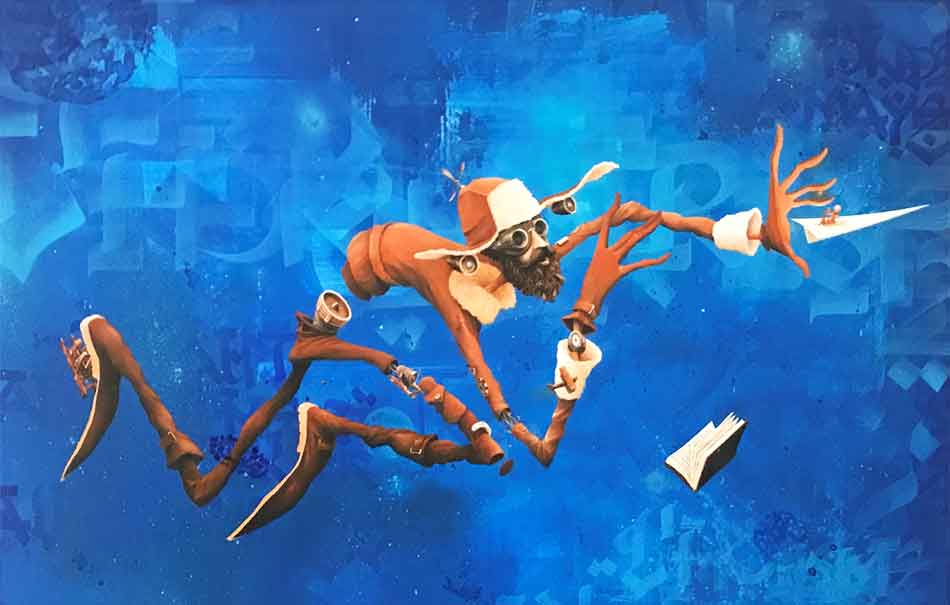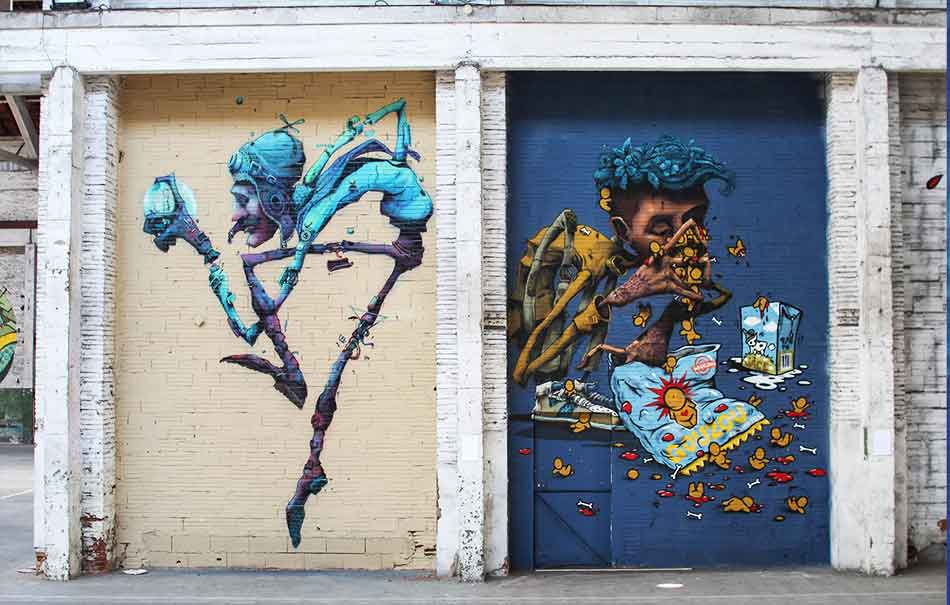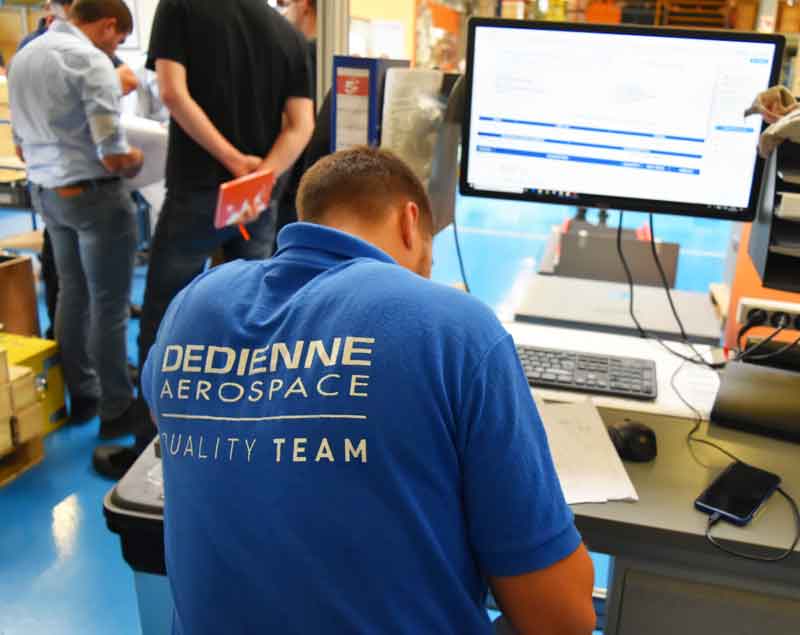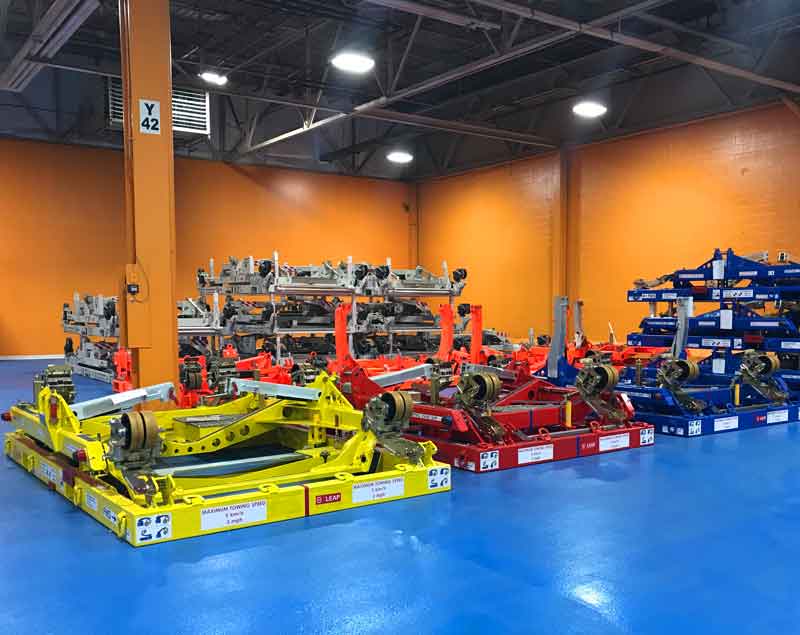A travel with Saint-Exupéry's aviator
Victorien Liria, dit Maye, was born in 1990 in Sète, a port city in the Languedoc region of France where Paul Valéry, Georges Brassens, but also the painters Pierre François, Robert Combas, and the Di Rosa brothers come from. He began to draw at 13 before turning to street art, first creating lettering and then figurative scenes. Self-taught, the Internet allows him to promote his works and gives him access to urban art festivals. While working in collaboration has allowed him to integrate different techniques and influences, he is aware that only the passage into painting on canvas will allow his work to acquire a form of immortality. So this is what he has been doing since 2013.
A travel with Saint-Exupéry's aviator
Victorien Liria, dit Maye, was born in 1990 in Sète, a port city in the Languedoc region of France where Paul Valéry, Georges Brassens, but also the painters Pierre François, Robert Combas, and the Di Rosa brothers come from. He began to draw at 13 before turning to street art, first creating lettering and then figurative scenes. Self-taught, the Internet allows him to promote his works and gives him access to urban art festivals. While working in collaboration has allowed him to integrate different techniques and influences, he is aware that only the passage into painting on canvas will allow his work to acquire a form of immortality. So this is what he has been doing since 2013.

L’aviateur, 2019, Abbaye D’Auberive ©A.Volot
His themes are narrative and dreamy. In an imaginary nature or in recomposed cities, half-man, half-machine characters emerge, like large flexible puppets elegantly articulated around mechanical parts. Most of the time we are unable to see the eyes of these slender characters, so dynamic thanks to their mannered postures which are viewed in profile or two-thirds positions. Masks, sunglasses, the shadow cast by a hat or a cap, these all allow his subjects to escape the trap of a gaze that would prevent the viewer from projecting himself onto them, or from knowing the true intentions of the painter.
In the painting presented here, Maye’s third typical setting – the colored void – is used to bring out a floating, centered figure moving from left to right. This represents the aviator -writer Antoine de Saint Exupéry launching his literary creation, The Little Prince, into the air on a paper plane. Under the character, on the right, the eponymous book flies half-opened, where we can imagine the pages are written with the text of the philosophical tale.
The aviator uses all the codes of Maye’s characters. His large, slender body, devoid of muscle, with his large feet and long slender fingers, is split in two, as if the weightlessness in which he moves had disarticulated him. Like a construction game character, we see that the junctions are made of propellers, aircraft engines, and electric cables. The character’s costume is that of aviators from the beginning of the 20th century, notably the hat, whose ear protectors are mischievously supported by jet engines like the wings of a twin-engine aircraft.
The assembly is propelled or supported by a machine under its left sole.
However, Maye does not forget his heritage as a letterer, giving depth to the background through a lacework of letters, like Arabic calligraphy written with a calamus, in shades of blue. We cannot help but think about the fate of Saint Exupéry who died on July 31, 1944 off the coast of Marseille while piloting his Lockheed P-38 Lightning over the Mediterranean.
The Little Prince, published a year earlier in the United States, was just taking off to become a world bestseller, translated into 361 languages.

L’aviateur, 2016, festival Mister Freeze Toulouse, ©Posca
1 April 2021





